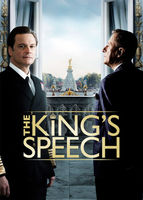
The King’s Speech follows the lives of King George VI and his family in the lead up to his brother’s abdication, and through the transitional phase of becoming King. The immense pressure which the family are under is demonstrated as Elizabeth and her daughters organise toys to be moved to Buckingham Palace.
The establishing scene is distorted and unnerving. The shot lasts for an extended period of time, with the camera angle looking down from the ceiling at the grand hallway and balcony. The balcony which we see in this shot becomes crucial to the conveyance of wider meaning within the scene. The shot jumps, not panning down gently as we might expect, further indicating the instability which the family are undergoing. The mies-en-scene shows Elizabeth and her daughters, sorting the girls’ collection of rocking horses.
The distorted view of the hallway, and balcony overlooking.
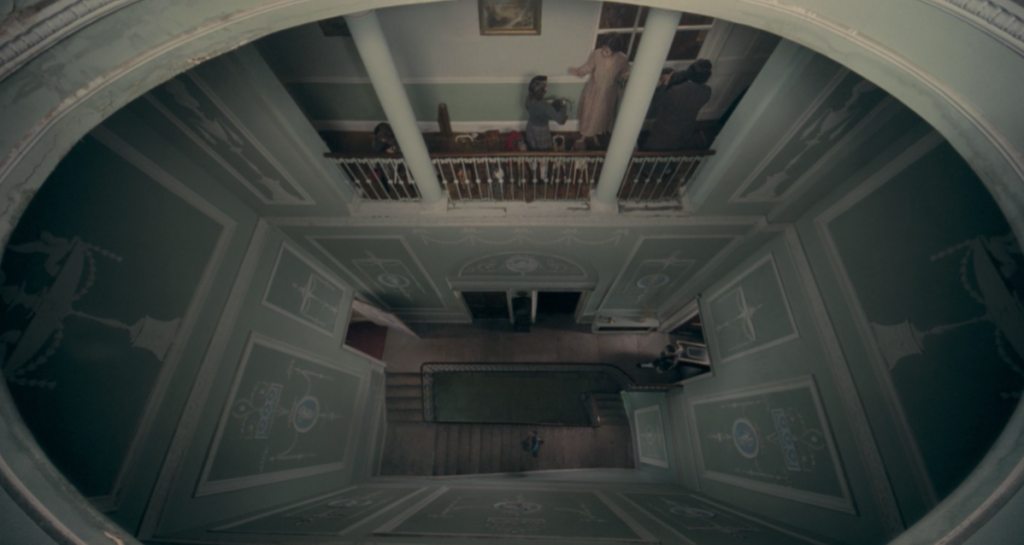
The horses are strategically lined up facing the balcony, imitating the iconic image of the Royal family on the balcony at Buckingham Palace, foreshadowing the challenges which they will face in leading private lives. Moreover, the fact that this iconic scene is recreated by toys, suggests that the family will become controlled by others, becoming the puppets of the general public and of parliament, maintaining little if any freedom, as toys such as rocking horses do.
The rocking horses in this scene represent the ambivalence of impending change, as well as symbolising stability. The average lifespan of a horse is between 25-30 years, this combined with their reliability as working animals creates a metaphor for stability. Whereas adults find comfort in the pastime of riding, the rocking horses provide a more accessible form of escapism for the young girls. Margaret’s comment to “Snowy”, “don’t worry”, we can infer is not just a reassurance to the horse, but herself. Although the scene features rocking horses, and not real horses, their association is clearly linked. Amidst great deal of ambiguity and uncertainty which the family is facing, the presence of the rocking horses, and the connotations of real life horses, represents the stability of the family unit and the monarchy.
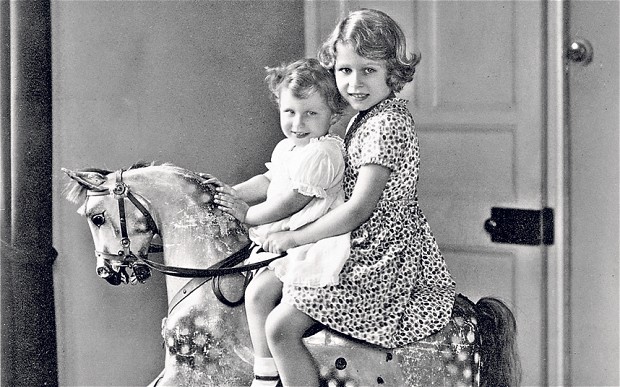
Queen Elizabeth II and Princess Margaret playing with a rocking horse as children.
Parallel to this, the Princesses’ new status limits their ability to indulge in pastimes such as riding and playing make-believe. This is highlighted by Princess Elizabeth’s comment, “will we have space for our horses in our new home?”, to which her mother reassures her they will. The irony of this comment is heightened by the biographical nature of the film, as the viewer is aware of the huge amount of space which Buckingham Palace will give the princesses to play in. However, the viewer can infer that although there will be ample room for her horses in the palace, in her own personal life, the amount of space which she will have for the horses, and the pursuits which they represent, will decrease. Although a small amount of stability is maintained by the confirmation that the horses will be moving with them into the palace, this does little to make the scene end with any less ambivalence than it started with.
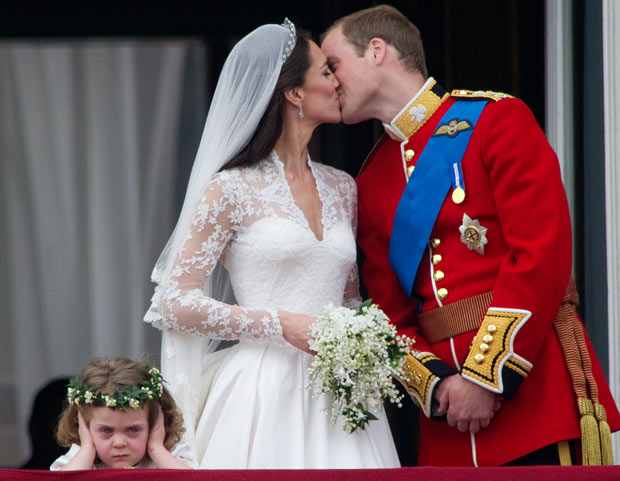
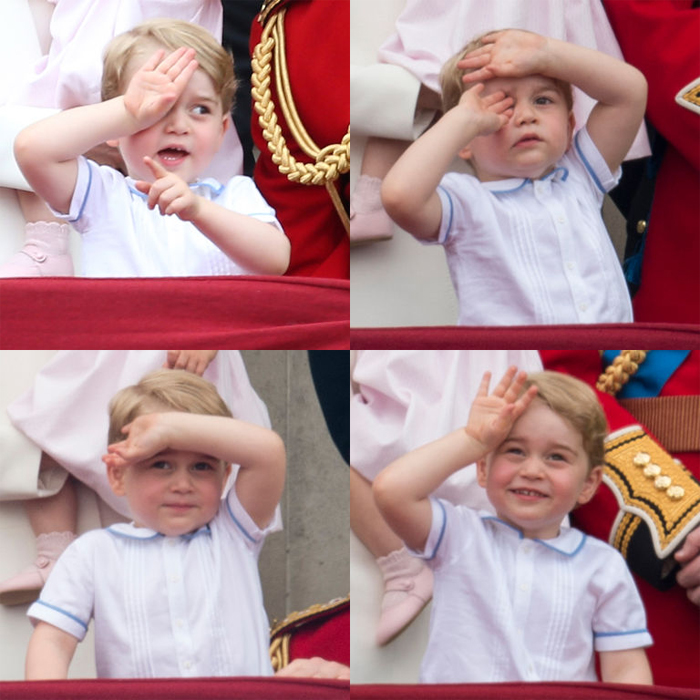
One of Wills and Kate’s flower girls demonstrating how tedious life in the public eye, and on this balcony can be. Also, Prince George growing tired of the spotlight.
Bibliography:
The King’s Speech. Tom Hooper. The Weinstein Company, 2011